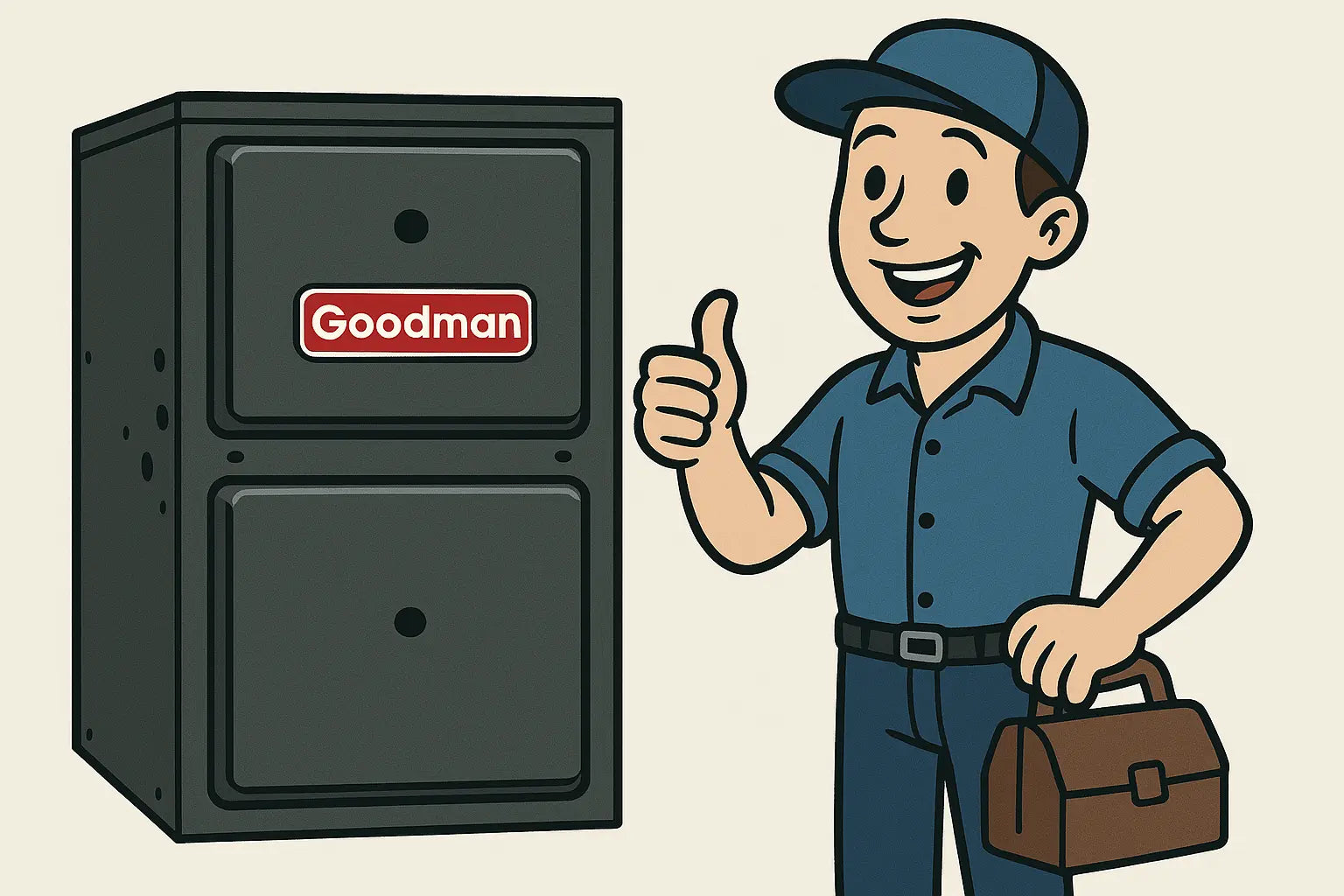Jake’s Take on Furnace Maintenance
Hey, it’s Jake! 🛠️ Owning a Goodman GR9S920603BN is awesome—92% AFUE, 9-speed ECM blower, and upflow or horizontal flexibility. But even the best furnace won’t run efficiently without a little TLC.
Regular maintenance keeps your home warm, reduces repair costs, and maximizes efficiency. In this guide, I’ll walk you through a DIY maintenance checklist you can tackle safely at home, plus share tips to avoid common mistakes.
1. Turn Off Power and Gas
Before doing anything, turn off the furnace power switch and gas supply. Safety first, my friends! ⚡🔥
This prevents accidental ignition or electrical shock while you inspect and clean your unit.
2. Inspect and Replace Air Filters
-
Remove your filter and inspect for dust and debris.
-
Replace it if dirty; generally every 1–3 months, depending on usage.
-
A clean filter improves airflow, prevents blower strain, and increases efficiency.
For more about filter replacement, check this Energy.gov furnace guide.
3. Clean the Blower Assembly
-
Remove the blower access panel and vacuum dust from the blower fan and surrounding components.
-
Check for loose screws or worn parts.
-
Rotate the fan by hand to ensure it moves freely.
A clean blower reduces energy use and prevents unusual noises. For a full walkthrough, see the GR9S920603BN manual.
4. Inspect and Clean the Heat Exchanger
-
Look for signs of cracks or corrosion.
-
Use a soft brush or vacuum to remove dust and debris.
-
Never attempt to repair a damaged heat exchanger yourself—call a professional.
5. Check Gas Connections and Igniter
-
Inspect flexible connectors and fittings for leaks (use a soap solution).
-
Confirm the igniter is clean and free of cracks.
-
Replace any worn or damaged parts per the Goodman GR9S920603BN product page.
6. Inspect Venting and Flues
-
Ensure all vent pipes are secure, free from debris, and properly sealed.
-
Look for condensation or unusual smells—these can indicate blocked airflow.
-
Correct venting ensures safe combustion and maximizes efficiency.
For venting tips, see this furnace installation guide.
7. Lubricate Moving Parts (If Needed)
-
Most modern ECM blower motors are sealed, but check your fan bearings and pulleys.
-
Apply light machine oil if recommended by the manual.
-
Avoid over-lubricating—it can attract dust and reduce efficiency.
8. Test Safety Controls
-
Check limit switches, flame sensors, and other safety controls for proper operation.
-
This ensures your furnace shuts off safely if something goes wrong.
-
Use the HVAC troubleshooting guide for reference.
9. Verify Electrical Connections
-
Inspect wiring for loose or frayed connections.
-
Confirm the blower and control board terminals are secure.
-
Replace damaged wiring or call a professional if unsure.
10. Clean Around the Furnace
-
Remove dust, debris, and clutter from around the unit.
-
Ensure proper clearance per Goodman’s guidelines for airflow and safety.
-
A clean workspace also makes future maintenance easier.
11. Run a Test Cycle
-
Turn the power and gas back on.
-
Set the thermostat to heat and listen for smooth operation.
-
Check that airflow, temperature, and ignition are all functioning properly.
Pro Tips from Jake
-
Make a maintenance calendar—stick to it!
-
Take pictures during inspections for future reference.
-
Use high-quality replacement filters and parts.
-
Address minor issues immediately before they escalate.
-
When in doubt about a gas or electrical component, call a licensed HVAC tech.
Outro: Wrapping It Up
A little maintenance goes a long way with the Goodman GR9S920603BN. 🔧💨 By following this checklist, you’ll extend your furnace’s life, boost efficiency, and avoid unexpected breakdowns.
For full specifications, manuals, and replacement parts, check out the Goodman GR9S920603BN product page.
Trying to decide if upflow is the right choice for you? Visit: Choosing the Right Orientation for Your GR9S920603BN Furnace.
Stay safe, stay warm, and keep those tools ready.
- Jake out! 🛠️🔥







